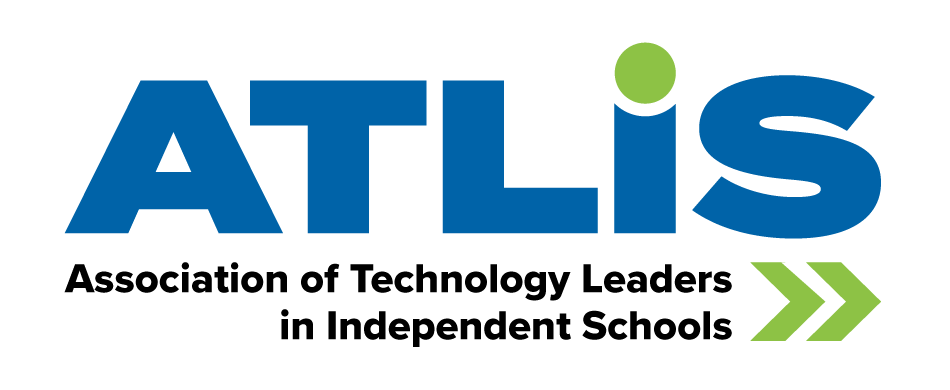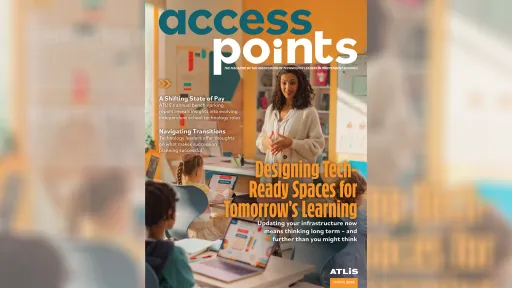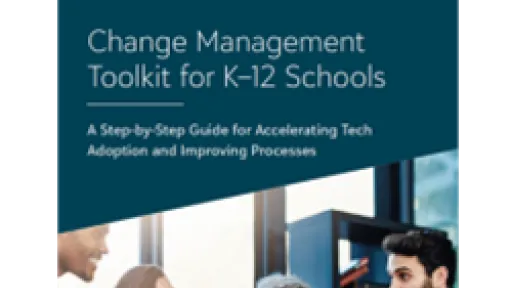In 2024, a Digital Education Council survey found that 88% of students said they use artificial intelligence for their coursework. Now, state and federal governments are playing catchup to the AI boom: Ohio, for example, recently announced that all K-12 schools in the state must have an AI policy by July 2026, and President Trump signed an executive order advancing AI education for American youth.
Amidst the flurry of government action, policymakers and mass media are unable to explicitly define what proper AI regulation and implementation looks like, especially on an individual school level. This means that the question of how schools should respond to and logistically prepare for an AI-supported classroom still remains a responsibility befallen to teachers and school administrators.
Such responsibility, however time-consuming and confounding as it may be, is turning from a nice-to-have to a necessity (and in the case of Ohio, mandated). While there is no one-size-fits-all approach to developing AI guidelines, this article provides a blueprint for how to create an AI policy for your school.
But first, what is an AI policy?
In general, a school AI policy is an official set of rules or guidelines that governs how AI can be used within an educational environment. Its main purpose is to provide a detailed outline on responsible and ethical use, student privacy, data protection, and academic integrity. Comprehensive AI policies take into account different use cases (teacher usage vs student usage being a primary example).
Do we even need an AI policy?
This is a good question, especially if you are calculating the cost-benefit analysis of creating an AI policy from scratch or already have some AI guidelines included in your general academic guidelines.
The answer isn’t completely clear cut. Even just a year ago, we recommended that having usage guidelines could be an easier starting point, especially if school leaders are concerned about the strict nature of a school-wide policy. However, the facts don’t lie: with an overwhelming percentage of students using AI, governmental pushes towards AI school usage, and the refinement of education AI tools like Flint, loose guidelines may not cut it in the near future.
How to create an AI policy for schools in five steps
We have the terminology and the why down pat. Now, let’s go into the how. There are five steps:
- Assess your starting point
- Gather an AI task force
- Learn from other schools’ AI policies
- Define values, boundaries, and use cases
- Roll out and collect feedback
Assess your starting point
You’ve already asked yourself, “do we even need an AI policy?” That means you’re already at a great starting point for this first step. You don’t have to scramble to create an official AI policy (we actually would recommend against that). Rather, look from a birds eye view to ask yourself:
- Do your current guidelines mention AI?
- Are students and staff clear on what’s acceptable AI use, including academic honesty and approved AI tools?
- Is there guidance on data privacy, bias, or over-reliance on AI tools?
If you answered yes to any or all of these questions, then you already have a solid foundation set in place to either refine based on community feedback or create a comprehensive policy exclusively for AI usage.
If your answer is no, that is also totally fine! You can start small by drafting addenda to existing academic integrity or technology use policies or having a professional development session for staff to get insights on how AI is being used in their respective classrooms. Or, this could be a great blank state to begin developing an AI policy.
Gather an AI task force
Next is figuring out who should be involved in creating your school’s AI policy. This team should be cross-functional and reflect the full spectrum of your school community. They will be in charge of shaping your school’s approach to AI, leading discussions, testing, writing, and advocacy throughout the school year and even during the summer.
A diverse and inclusive task force includes teachers across different grade levels and subject areas to ensure that the policy works for everyone. It also includes a variety of opinions on AI: educators who are AI lovers, skeptics, and everyone in between. The most meaningful conversations often emerge when folks from different sides of the table come together.
Learn from other schools’ AI policies
The dream team is now built, and you’re having your first meeting. But what is the structure of an AI policy? What language should you use? Is there an outline to follow? How do you turn the need for an AI policy to an actual document?
The good news is that you don’t need to reinvent the wheel. While it’s difficult to discern which schools have AI policies they are willing to share through the classic cold email method, there are free online libraries of AI school policies you can use as reference and to brainstorm. Flint’s AI policy library, for example, contains advice, resources, and examples collected from 200+ schools worldwide.
Each school will have slightly different policies depending on their values, academics, and honor codes. However, getting inspiration from real examples can help validate ideas and give you new ones to consider.
Define values, boundaries, and use cases
Now that you have a general idea of what an AI policy looks like, it’s time to dig deep into your school’s values, boundaries, and use cases.
Think about your community values, especially in regards to:
- Equity: Ensuring that AI tools are accessible to all students, not just those with the latest devices or the most tech-savvy teachers.
- Creativity and inquiry: Encouraging students to use AI to explore ideas, generate inspiration, or personalize their learning paths.
- Academic integrity: Making sure AI supports authentic learning, not shortcuts that undermine skill-building or honest work.
- Human oversight: Reinforcing that AI should enhance, not replace, the role of the teacher or student learning.
When it comes to boundaries (e.g. what is and isn’t acceptable AI use), many schools follow a traffic light model, using red light, yellow light, and green light for scaffolded AI usage permissions. You may want more detailed boundary settings, such as allowing AI for brainstorming but not drafting, or only allowing specific AI tools to be used during school hours.
This then goes into use cases: can AI be used for all subjects? Just by teachers? Only for test prep? Clearly defining how and when AI can be used is key to a strong AI policy. Our tip is to use the diverse opinions of your AI task force to make sure you aren’t missing key use cases.
Once you have these three components confirmed, you can create a draft of your AI policy. While writing, encourage people to find gaps in its coverage and ask lingering questions.
Roll out and monitor reactions
Once your draft policy or guidelines are ready, it’s time to bring the broader school community into the conversation. Some ways you can share the policy and promote collaboration are:
- Present at faculty meetings and grade-level team huddles
- Host student town halls or advisory discussions
- Send home summary guides or FAQs for parent AI communication
- Create an internal webpage or shared drive where staff can access the full policy, updates, and related PD materials
- Schedule regular committee check-ins to reflect on implementation
- Offer 1:1 conversations with department chairs or teachers who have questions or concerns
- Create anonymous feedback forms for students, families, and staff
- Encourage teachers and students to share classroom examples of where the policy is working—or where it needs clarity
In this stage, it’s important to provide a constant feedback loop. When students and staff have the space to express their opinions and suggestions, you are building trust, surfacing edge cases early, and setting the tone that your school is proactive, inclusive, and committed to safe, meaningful AI integration.
I made an AI policy! What’s next?
As we mentioned earlier, the AI landscape is evolving at a rapid pace. New tools will emerge, student usage patterns will shift, and what we consider “best practice” today may look completely different a year from now. That’s why it’s critical to treat your AI policy not as a static rulebook, but as a living document that grows alongside your community’s needs and technological literacy.
Continue to check in with your AI task force or advisory group throughout the year. Encourage ongoing feedback from teachers, students, and families. When challenges arise or new use cases gain popularity, revisit your policy with curiosity and an open mind.
By engaging your community, anchoring your policy in educational values, and staying open to change, you're helping your school lead with confidence into the future of learning.



